We have been re-using the soil in our container gardens for many years. It’s time we actually write about the subject!
Perhaps surprisingly, we haven’t run into any issues with re-using our container garden soil. Even after nearly a decade. There are some practices that we generally recommend, though.
This guide will walk you through the various ways we work with our container gardening soil every year!
If you’d like to check this topic out in video form, we put together this video on the subject as well!
Why It’s Important To Re-Use Garden Soil
If you have a sizable container garden, like we do, it would be incredibly wasteful to throw away the soil every year. It would make container gardening completely uneconomical!
Put simply, if we had to replace our hundreds of gallons of soil every year, there’s a slim chance that we’d be gardening in containers as extensively as we do!
There’s absolutely no reason that soil can’t be re-used year after year!
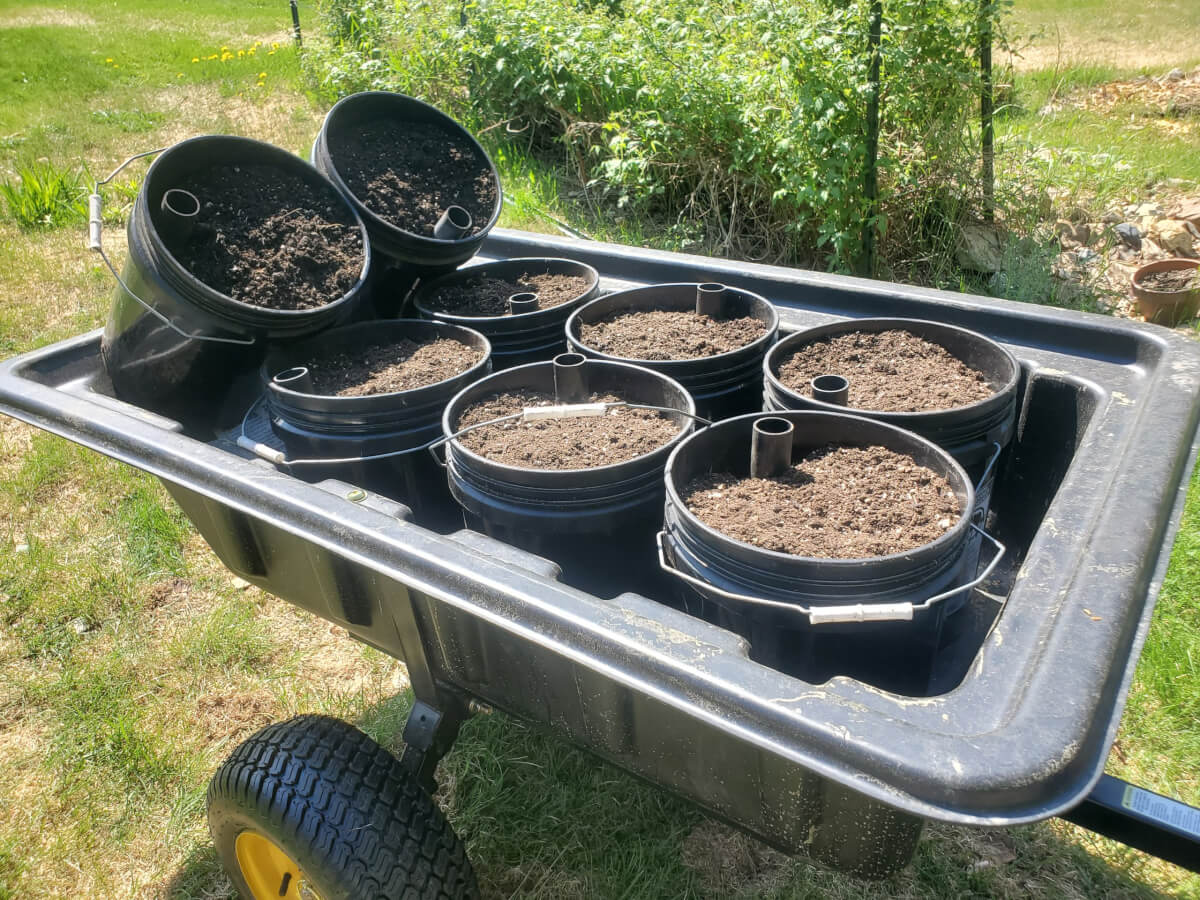
If you think about it, it’s actually quite silly to think you couldn’t re-use your container garden soil! We re-use the soil in the ground. We re-use the soil in raised beds. It’s a common practice, world over! The vessel doesn’t matter one bit.
The biggest concern surrounds the soil’s nutrition, of course. That once a given plant has consumed the nutrients from that soil, it is technically “spent.”
There are a few ways to help with that and that’s what this guide is all about!
How We Store Our Garden Soil Over The Winter
Before we get into the mechanics of how we re-use our garden soil every year, we’ll first discuss our general process and storage techniques.
First, we generally “set up” and “break down” our container gardens, every season. This is a lot of work, but there are a few important reasons that we do this.
We store that soil, in bulk (or all together), over the winter.
- Allows us to “compost” the soil to break down roots
- Mixes the soil up. (Instead of rotating our crops, we’re rotating our soil)
- Allows us to more easily store our container garden for the winter
- Provides a more “even” soil, commonly from several different mixes or brands of soil
- Allows for the “washing” of our soil, discussed later
The biggest reason we do it is about removing the roots from the soil and our previous garden season.
We’ve generally found it best to go through a composting-like process with our soil. We effectively treat it like we’re composting it, using all the same techniques one would use to start a compost pile.
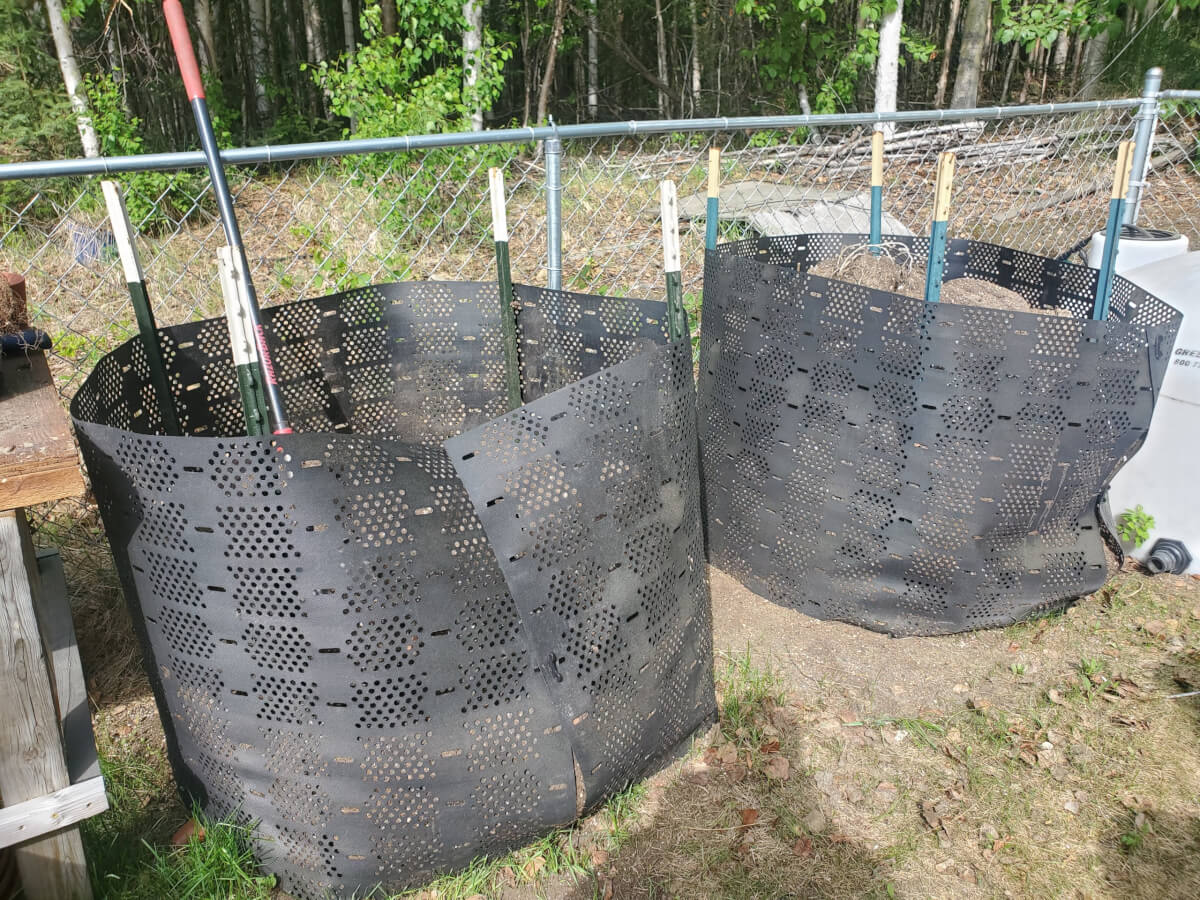
The only difference is that we’re not actually putting the soil in our compost pile!
We store our container garden soil over the winter in Geobin composting containers. These are a fantastic solution that scale up to very large storage containers, up to 246 gallons per Geobin!
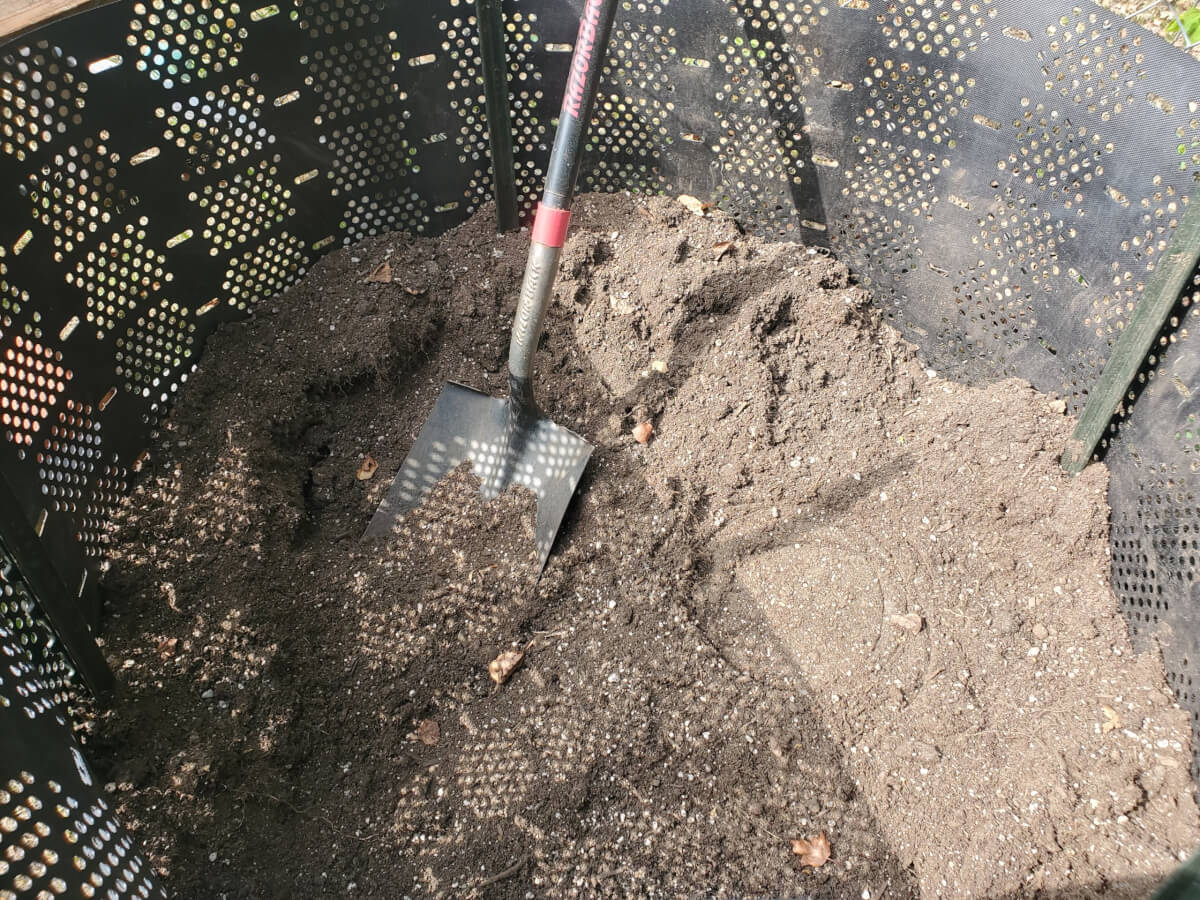
At the end of the season, we dump all of our containers into one of our two soil-storage Geobins. Over the winter, the roots and other organic materials will effectively compost.
The following season, most of the roots have been successfully composted, which also adds a little bit of nutrition back into the soil!
Refreshing & Revitalizing Your Container Garden Soil
As we mentioned above, one of the main concerns about re-using soil is that it has been depleted of the natural nutrients.
This nutrition can easily be added back in, however.
In the spring, we will often refresh our soil with additional compost. This can get you on a “perpetual” track with your soil.
When we are filling our container gardens again the next spring, we infuse new compost into the mix.
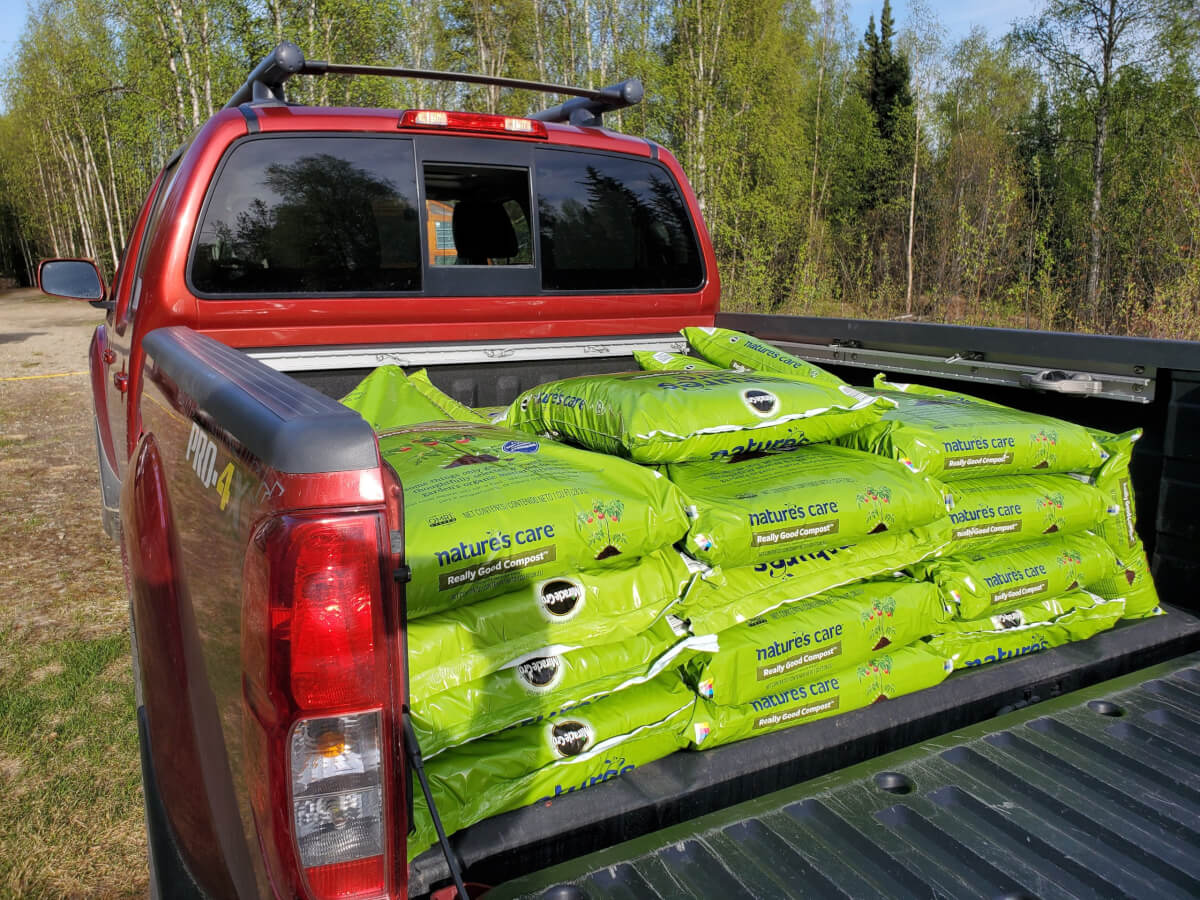
These days, we buy compost every couple years. We often will buy more than we intend to use in a given season, knowing it will serve us in years to come.
Honestly, we don’t have exact ratios. We go more by the actual look of our soil. Since we built our own soil, we do sort of know what it “should” look and feel like.
Let’s say that you didn’t make your soil, though. A good general guideline is to add about a half gallon of compost per five gallons of actual soil you are processing.
There’s a lot of flexibility to this, it could be a bit more or even a bit less.
There’s no harm in adding “too much” compost, so long as your soil doesn’t become “mostly” compost. Compost is a very gentle nutrition component, there are no concerns about “burning” your plants like with fertilizer.
Refreshing Other Components In Your Container Garden Soil
You’ve probably observed that there are other things in your container garden soil.
Your soil might have other components like perlite, vermiculite, sphagnum peat moss, coco coir and possibly other things in it. These components do break down over time, so it might also be worth assessing and adding to it.
When you are filling your containers in the spring, this is also a good time to renew any of these additional components.
Some years, we might add another few handfuls of perlite and/or vermiculite. This will help keep the soil “airy” and will provide the benefits that these components provide to soil.
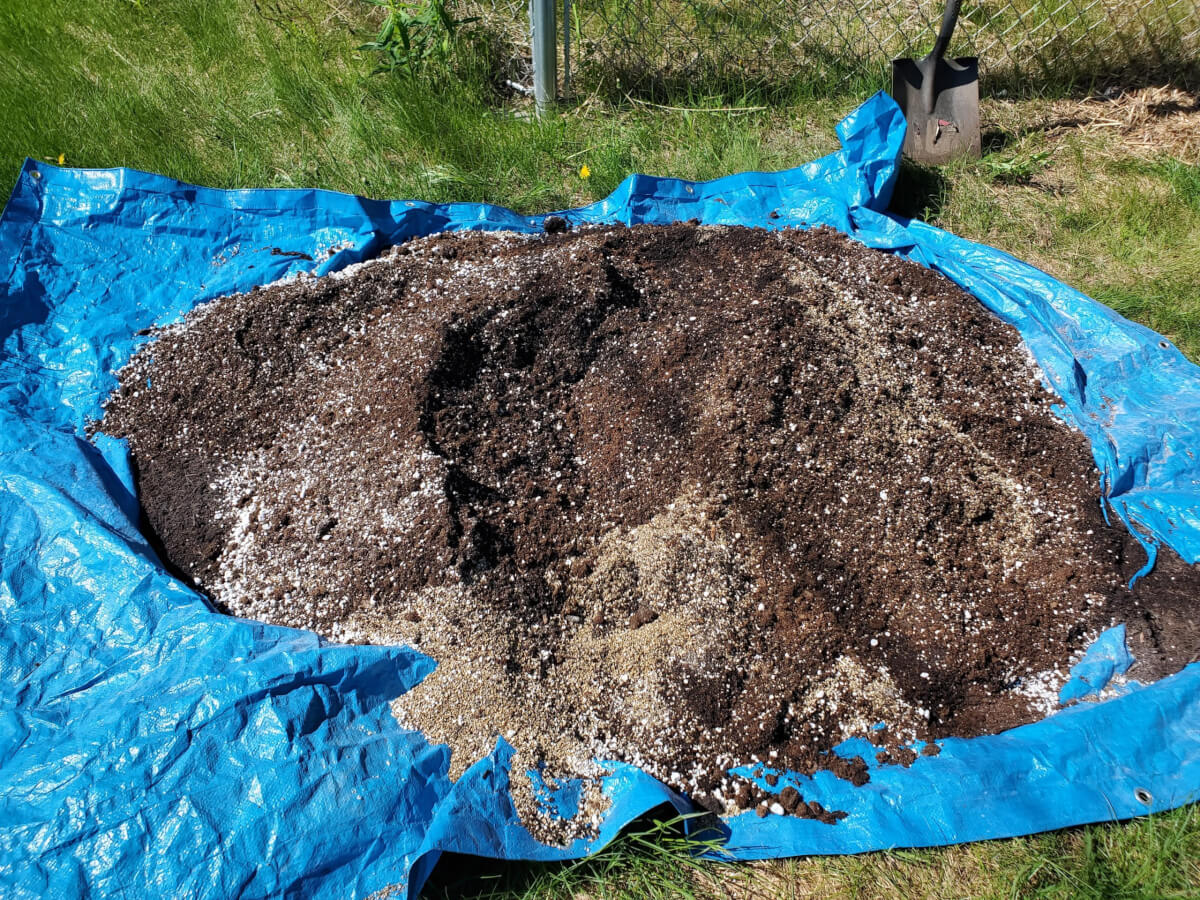
If you need to combine ingredients with a lot of soil, using a tarp is an easy way to do it. You can mix things together by hand or with tools.
We might also add a little bit of peat moss or coco coir, particularly if the soil is looking a bit “compressed.”
These components help with water drainage, water retention and also resisting soil compaction.
We will often assess these other soil components every season, but we don’t necessarily add to it every season. We look at things and if it looks like it could use a little extra, we’ll add it.
A little goes a long way with these. You don’t need to add a lot back in, just a little bit to keep your container garden soil in good shape.
Alternatives To Renewing Container Garden Soil Nutrition
Even with seasonal additions of compost, re-used soil can become depleted in certain nutrients more so than others. It can be really difficult to achieve perfect levels of nutrition.
This same fact is true in fields with regular soil!
We have generally found that relying on compost alone as a nutrition source is not sufficient for growing most plants to fruition. They need a little bit more help!
There are two major ways that you can integrate fertilization techniques into this overall garden soil re-use strategy.
One, you could infuse fertilizer into your soil when you are refreshing your soil and filling your containers every year. A good choice here is a granular fertilizer of some sort, applied to the soil as stated by the fertilizer manufacturer.
This will provide your plants an enhanced nutrition profile, which should largely make up for any major deficiencies your soil is experiencing.
An alternative to this is the use of fertigation techniques. This is what we do. We heavily rely on water soluble fertilizers, sometimes treating our container gardens somewhat like hydroponic systems.
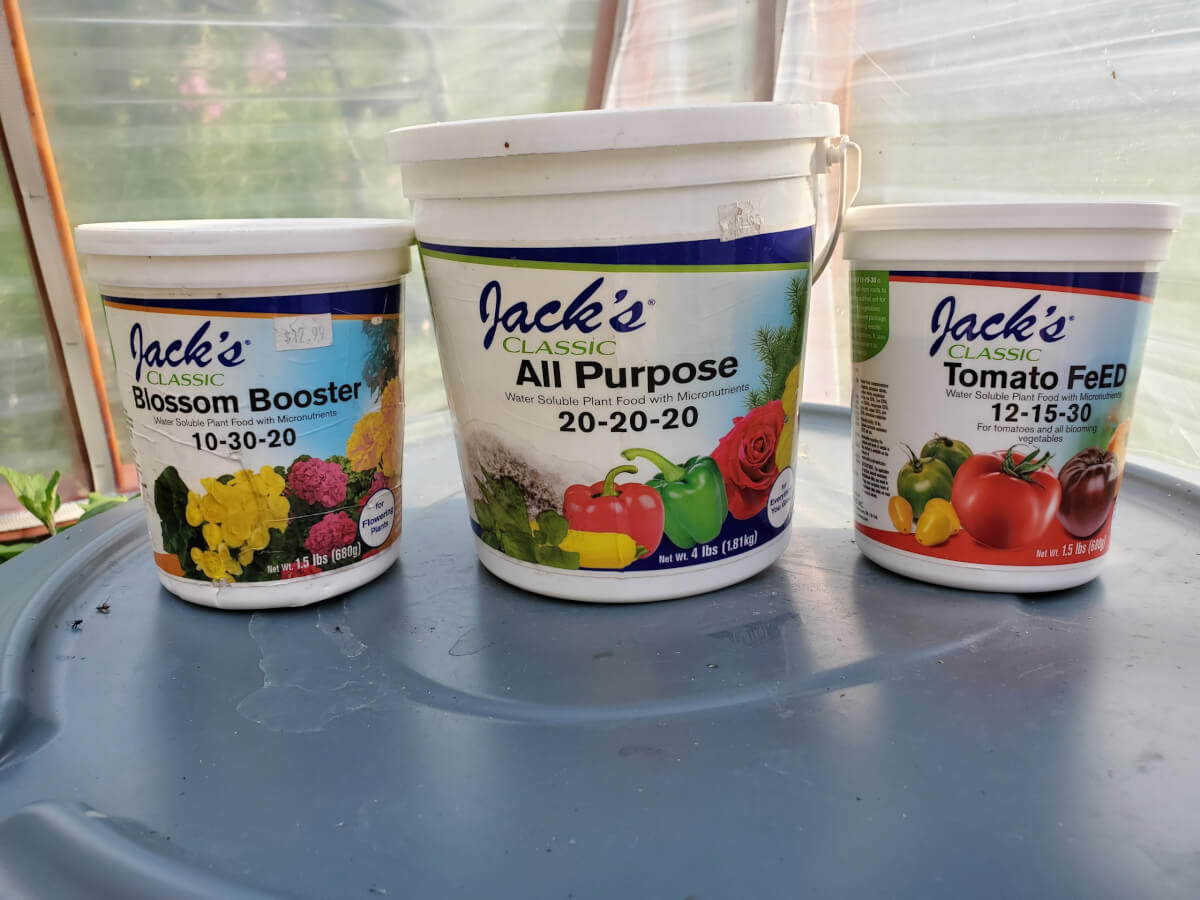
This is how we generally fertilize all of our plants. We’ve become big fans of the Jack’s line of fertilizer. We buy 25 pound bags, when possible, and refill our original containers.
We essentially fertilize our plants pretty much every time we water them. In our case, our fertilizer features what is called a “constant feed rate” or the dosage you use when you fertilize every time you water. This rate is 1/4 the normal dosage, compared to a full dose if you were fertilizing every week or so.
In fact, using either of these techniques can somewhat supplant the use of compost entirely. We think it’s a good idea to use both fertilizer and compost.
Fertilizer is a short term solution, compost is a long term solution. The two have entirely different endpoints. In our opinion, it’s good to practice both.
Concerns About Disease Transfer By Re-Using Container Garden Soil
One of the other concerns about re-using soil year after year is the possibility of disease spreading.
Frankly, this is not something that we have observed in nearly ten years of re-using our container garden soil. As such, it’s unlikely to be as much of a problem as some people think it is.
That said, just because we haven’t experienced it personally, that doesn’t mean that it isn’t technically possible.
If we were to observe a major disease in our plants, and suspected it to be soil borne, we would likely sacrifice that soil before we stored it for the following winter.
There’s simply no point in risking other plants, and the future of your entire soil base, by trying to save a few gallons of soil!
So, even if disease were a theoretical problem, there are ways to prevent it from spreading to other plants and your future container gardens.
Concerns About Salt Build Up In Re-Used Container Garden Soil
This is actually a legitimate concern. When gardeners talk about salt buildup, what they are talking about is soluble salts that can increase the salinity of your soil.
Salts, as you might imagine, aren’t good for plants. Too much salt can cause problems in your plants, from yellowing to outright withering.
We take a couple of precautions to make sure this doesn’t really affect our soil.
First, because we store our soil in bulk for the winter, it has an opportunity every season to be “washed” every year. This helps reduce salt build up.
We store our soil outside, allowing it to receive a little bit of rainfall. It also experiences a rather significant snowfall every year. This snow melts in the spring, resulting in further washing of the soil.

This alone appears to be enough that we haven’t had any major concerns about salt build up in the many years we’ve been practicing soil re-use.
Since we often practice fertigation, we also have a secondary technique. Salt build up is a genuine concern with fertigation, which can be induced by the use of “too much” fertilizer.
Every season, we will flush our plants with just plain old water instead of our normal fertigation technique. This helps reduce the fatigue that can come from over-use of fertilization, something we’ve built into our fertigation practices.
Were a salt build up problem to crop up, we could easily solve the issue by flushing our plants with a lot of plain water. We would likely follow this up with continual use of plain water, until the salt build up was reduced.
We might even take a step to “water” our soil pile in the spring, prior to its use. This would very effectively wash the salts from the soil, since there would be no plants to absorb those salts.
Re-Use Your Container Garden Soil Every Year!
We hope that we’ve offered you a few tips and tricks about re-using your soil every year. We have been asked a few times if this was possible, so we are glad that we finally got around to writing about it.
Using these techniques, we’ve been able to re-use our container garden soil for many, many years with very little continual investment. This has been great, since it greatly increases the value of our initial investment into our soil.
As always, if you have any questions, want to add something or would like to tell us something, we’d love it if you slapped a comment down below!
That’s All We Wrote!

Having a good time? We have an ever growing list of insightful and helpful subarctic & cold climate gardening articles, waiting out there for you!
- Cold Climate Gardening Basics 👉
- Growing Your Garden From Seed Indoors 👉
- Advanced Cold Climate Gardening Techniques 👉
- Plant Specific Cold Climate Growing Guides 👉
- Subarctic Perennial Food Forests & Foraging 👉
- Indoor Garden Lighting & Grow Rooms 👉
- Greenhouses & Temperature Control 👉
- Harvesting & Food Preservation 👉
- Solving Cold Climate Garden Problems 👉
- 1 Minute Reads On Tons Of Garden Topics 👉
FrostyGarden.com is 100% ad-free and we do not use affiliate links! This resource is voluntarily supported by our readers. (Like YOU!) If we provided you value, would you consider supporting us?
